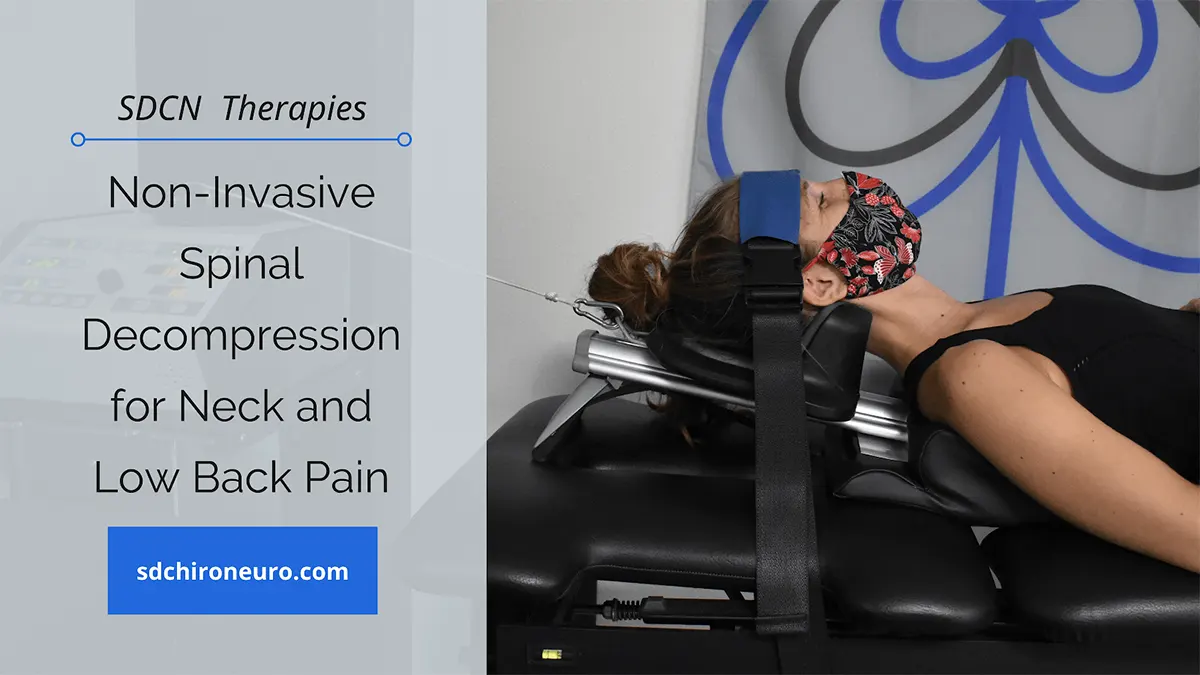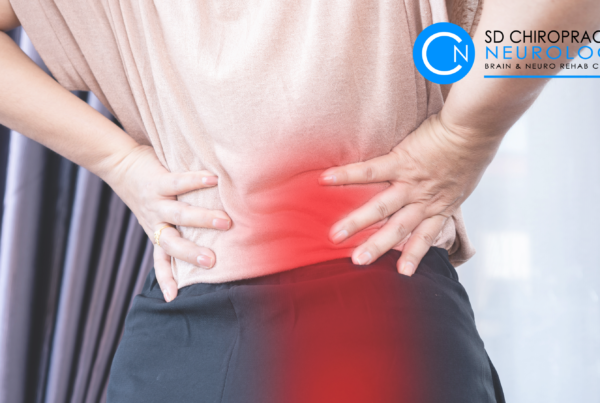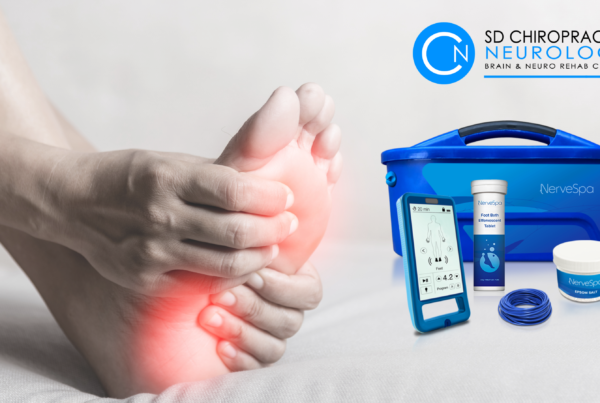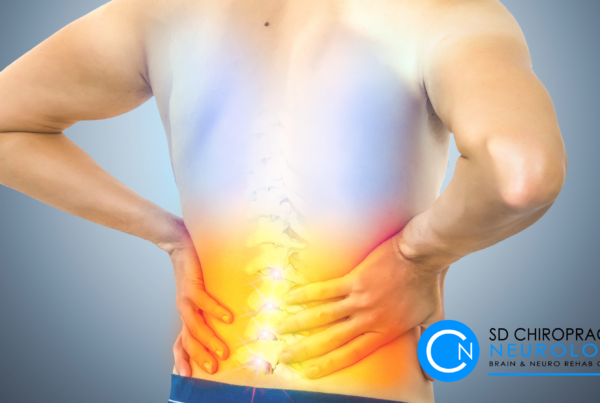
Chronic neck and low back pain can be a pesky problem that many people suffer from. Neck and low back pain can affect those who are sedentary but also those who have active lifestyles. Especially if you haven’t responded to conventional therapies or you feel like you revert back to your “normal” after a few days or weeks following treatment, then spinal decompression therapy might be worth your time.
Spinal decompression therapy is a non-invasive and safe therapy that stretches out your spine to help decompress the disc and tissues in the area of pain. This relief of pressure can help with a myriad of conditions in the spine that we will cover below! First, let’s go over the general anatomy of the spine and why you might be experiencing symptoms like radiculopathy, weakness, or pain among other things.
Anatomy of the Spine
The spinal column is made up of 5 sections:
Cervical – makes up the neck and is in charge of the head, neck, diaphragm, arms and hands.
Thoracic – makes up the upper back and is in charge of the chest muscles and abdominal muscles.
Lumbar – makes up the lower back and is in charge of the leg muscles and feet.
Sacrum & Coccyx – Makes up the tail bone and is in charge of your bowels, bladder, and sexual organs.
Each spinal segment consists of a vertebrae, spinal cord segment, vertebral disc, spinal nerves, ligaments and muscles. These segments stack one on top of the other giving you your spinal column. The discs between each vertebrae act as a shock absorber along with the ligaments keeping each vertebrae in place while also allowing for movement. The small spinal nerves run in between each segment which as we start putting the pieces together, can explain how people can get pinched nerves. If one of the discs bulges or a piece breaks off, it can put pressure on the surrounding nerves. This small pressure can be absolutely debilitating and painful. Eventually it may even end up leading to numbness, tingling, burning or weakness in the muscles that the nerve projects to.
What is Spinal Decompression Therapy (SDT)?
SDT is an effective treatment method for reducing low back and neck pain. It focuses on alleviating compression on the nerves in your spine by creating a gentle “pumping action” in the disc. This reduction in pressure on the nerves can relieve any numbness, tingling, or pain your feeling in your spine. The SDT machine will pulse between a higher weight and a lower weight causing the disc to pump nutrients in and out.
Each treatment session lasts, on average, between 15-30 minutes, and patients typically undergo 15-30 sessions within 4 – 6 weeks depending on the severity.
Spinal Decompression Therapy Can Treat:
Bulging, Degenerating, or Herniated Discs – A condition where the nucleus of a spinal disc either pushes through the outer exterior causing a bulge or a piece tears off which can press on the spinal cord or nerves. This can result in pain, numbness, or weakness in the arms or legs.
Sciatica – Usually only affects one side vs the other but can affect both depending on the person. Your sciatic nerve runs down your leg and can cause pain, numbness or tingling in the foot. It can be caused when a disc herniates or a bone spur pushes on the nerve in your low back. People may also experience sciatica with piriformis syndrome.
Facet Syndrome – A condition in which the facets between the vertebral joints become painful. It is one of the most common causes of low back pain and is typically associated with the cartilage in the joint degenerating. Also known as Facet Arthrosis/Arthropathy.
Spinal Arthritis – Similar to facet syndrome, this occurs when the joint becomes inflamed and there is wear and tear in the cartilage. This degenerative condition can be caused by lack of movement in the spine, inflammation, infection, autoimmune disease and other conditions.
Myelopathy – A condition where the spinal cord is compressed. Usually found through MRI imaging. Can occur at any level of the spinal cord.
Spinal Radiculopathy – A condition due to a compressed nerve in the spine that can cause pain, numbness, tingling, or weakness of the nerve. It is most common in the lower back and neck.
Spinal Stenosis and Claudication – Spinal stenosis occurs when there is a narrowing in the spine. A common symptom of spinal stenosis in the lumbar spine is claudication. This can cause inflammation in the nerves resulting in pain and some may even have difficulties walking.
Still experiencing spinal pain?
Contact us to schedule an appointment. You don’t have to continue living in pain, we’re here to help!





